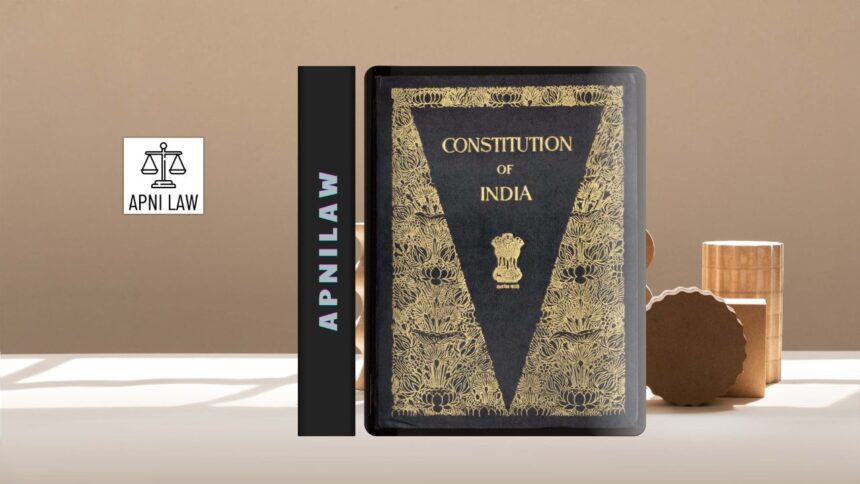The 42nd Amendment Act, 1976 is remembered as the most far-reaching amendment to the Indian Constitution. Scholars and political analysts often call it the “Mini-Constitution” because of the wide and sweeping changes it introduced. It altered the balance of power between the executive, legislature, and judiciary. It also redefined the relationship between the central and state governments, reshaped the scope of fundamental rights, and inserted new constitutional provisions. The amendment was enacted during the period of Emergency declared between 1975 and 1977 under the leadership of Prime Minister Indira Gandhi. Passed in November 1976, it reflected the government’s intention to strengthen central authority and to implement the recommendations of the Swaran Singh Committee. However, it faced widespread criticism for centralizing power and limiting democratic freedoms. To understand its importance, we must explore its background, major provisions, and its legacy.
What Was the Origin and Context of the 42nd Amendment?
The 42nd Amendment arose from a turbulent period in Indian politics. The Emergency, which began in June 1975, created an environment where the ruling party exercised unprecedented control over democratic institutions. Indira Gandhi’s government used this opportunity to introduce a constitutional amendment that reshaped the very foundation of Indian democracy.
The Swaran Singh Committee, formed earlier, had suggested constitutional changes to strengthen the government and ensure better implementation of policies. Drawing on its recommendations, the government drafted the amendment. When Parliament passed it in November 1976, it signaled a decisive attempt to concentrate authority in the hands of the central government. While its proponents justified it as a move to promote unity, stability, and development, critics denounced it as an assault on democratic freedoms and federalism.
How Did the Amendment Change the Preamble?
One of the most symbolic changes came in the Preamble. The amendment added three new words: “Socialist,” “Secular,” and “Integrity.” These insertions gave the Preamble a fresh identity. India officially became a socialist and secular republic that also promised integrity of the nation.
The inclusion of the word “Socialist” reflected the government’s commitment to social and economic equality. The word “Secular” reinforced the principle that the state would not favor any religion. The word “Integrity” emphasized the unity of the country in all respects. While these terms aligned with the ideals of the ruling party, critics argued that altering the Preamble undermined the spirit of the original Constitution framed in 1950.
What Were the Fundamental Duties Introduced?
The amendment inserted a new part in the Constitution, Part IV-A, Article 51A, which listed Fundamental Duties of citizens. For the first time, Indian citizens were constitutionally obligated to perform certain duties.
The ten duties ranged from respecting the Constitution and its ideals to honoring the national flag and anthem. They included obligations such as protecting public property, promoting harmony, safeguarding the environment, and developing a scientific temper. These duties sought to balance the rights enjoyed by citizens with responsibilities toward the nation.
Though the idea was to create responsible citizenship, many critics pointed out that Fundamental Duties were not legally enforceable. Still, their presence in the Constitution reflected the government’s effort to remind people of their obligations in a time of political and social unrest.
How Did the Amendment Alter Federalism?
The 42nd Amendment also made significant changes to the federal structure of India. It transferred five important subjects from the State List to the Concurrent List. These subjects were education, forests, protection of wild animals and birds, administration of justice, and weights and measures.
This change gave the Parliament greater authority to legislate on these matters, even if states wanted to retain control. By moving these subjects to the Concurrent List, the central government expanded its influence at the expense of state autonomy. Critics argued that this went against the federal spirit of the Constitution, which had been designed to maintain a balance between the center and the states.
How Did It Affect the Judiciary?
The amendment drastically reduced the powers of the judiciary. The Supreme Court and High Courts had traditionally enjoyed the power of judicial review, which allowed them to examine whether laws passed by Parliament or state legislatures violated the Constitution. The 42nd Amendment curtailed this power.
It restricted the judiciary’s ability to review constitutional amendments and gave primacy to Parliament’s decisions. It also empowered the government to transfer judges without their consent and increased the retirement age of judges of High Courts. These provisions weakened judicial independence and tilted the balance of power in favor of the executive and legislature.
This attack on the judiciary became one of the most controversial aspects of the amendment. Many legal experts saw it as an attempt to silence the courts, which had previously issued rulings unfavorable to the government.
What Happened to the Directive Principles of State Policy?
The amendment gave greater importance to the Directive Principles of State Policy (DPSPs). It inserted three new principles and amended one existing provision. It declared that Directive Principles would take precedence over Fundamental Rights in case of conflict.
This meant that Parliament could pass laws to implement Directive Principles even if they limited or abrogated fundamental rights. For example, laws related to equitable distribution of resources or prevention of concentration of wealth could not be challenged on the ground that they violated the right to property.
While this move aimed to promote social and economic justice, it undermined the sanctity of fundamental rights. By placing Directive Principles above rights, the amendment disturbed the delicate balance that the Constitution had originally maintained between individual freedoms and the goals of social welfare.
How Did It Expand Parliamentary and Executive Powers?
The 42nd Amendment also strengthened the powers of the Parliament and the executive. It extended the tenure of the Lok Sabha and State Assemblies from five years to six years. This reduced the frequency of elections and allowed governments to hold office longer.
It also made the President and Governors bound to act according to the advice of their respective Council of Ministers. This provision removed any discretionary powers they might have exercised earlier.
Furthermore, the amendment gave Parliament the authority to amend any part of the Constitution, including fundamental rights, without facing much judicial scrutiny. This expansion of parliamentary supremacy threatened the principle of constitutional checks and balances.
What Role Did Tribunals Play After the Amendment?
The amendment introduced new provisions for tribunals under Part XIV-A. It inserted Articles 323A and 323B, which allowed the creation of administrative and other specialized tribunals. These tribunals could deal with matters such as service disputes, taxation, and industrial conflicts.
The idea was to reduce the burden on regular courts and ensure speedy justice. However, since tribunals functioned under the executive, questions arose about their independence and fairness.
What Was the Impact and Legacy of the 42nd Amendment?
The impact of the amendment was profound. It concentrated power in the hands of the central government, undermined the independence of the judiciary, and reduced the role of states. It redefined the relationship between the state and citizens by emphasizing duties over rights.
The amendment faced intense criticism from opposition leaders, legal scholars, and civil society. After the Emergency ended, many of its provisions were rolled back by the 43rd and 44th Amendments. These subsequent amendments restored judicial review, reduced the term of legislatures back to five years, and reinstated certain checks and balances.
Nevertheless, some changes of the 42nd Amendment, such as the inclusion of Socialist, Secular, and Integrity in the Preamble, and the Fundamental Duties, remain part of the Constitution today. Its nickname “Mini-Constitution” reflects the scale and scope of alterations it introduced.
Why Does the 42nd Amendment Matter Today?
The 42nd Amendment serves as a reminder of how constitutional amendments can reshape democratic structures. It highlights the dangers of centralizing power and curtailing judicial independence. At the same time, it also demonstrates the resilience of Indian democracy, as later governments and courts restored many of the checks and balances.
For students of law, politics, and governance, the 42nd Amendment stands as a critical case study. It shows how constitutional design can be challenged in moments of political crisis and how democratic institutions respond to such challenges.
For any specific query call at +91 – 8569843472
Conclusion
The 42nd Amendment Act, 1976 remains one of the most controversial chapters in India’s constitutional history. Enacted during the Emergency, it aimed to strengthen central authority, expand parliamentary supremacy, and promote certain ideals. Yet, it weakened judicial independence, curtailed rights, and altered federal balance.








